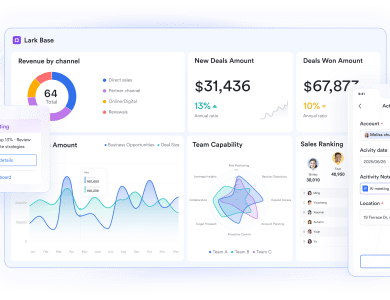Going to the Bathroom Too Often? A Physio’s Take on Bladder Training 101

If you’re constantly checking for the nearest bathroom or making multiple trips throughout the day (and night), you’re not alone. Frequent urination is a common concern that affects people of all ages, and it’s not always caused by how much you drink. Often, it’s a matter of bladder habits, muscle coordination, and communication between your brain and bladder. The good news? You can retrain your bladder.
With support from pelvic floor physiotherapy in Edmonton, individuals dealing with urgency or bladder control issues can regain confidence and improve their daily routines, without rushing to the washroom every hour.
What Is Bladder Training—and Why Does It Matter?
Bladder training is a non-invasive, education-focused approach used to manage urinary urgency, frequency, and incontinence. The training helps recondition your bladder to follow a more appropriate schedule, reducing those constant urges and allowing you to regain confidence.
As part of a pelvic health physiotherapy plan, bladder training addresses not just the bladder itself but the pelvic floor muscles, breathing patterns, and behavioural habits that all play a role in your urinary rhythm. It is effective for both women and men and is often recommended alongside other therapies like pelvic wall therapy or biofeedback.
Common Reasons for Frequent Urination
- Overactive bladder (OAB), where the bladder muscles contract too often
- Tight or overly active pelvic floor muscles that send false urgency signals
- Bladder irritants (caffeine, alcohol, spicy foods, acidic drinks)
- Poor hydration habits (too much fluid at once or not enough overall)
- Hormonal changes (especially during perimenopause or postmenopause)
- Stress, anxiety, or trauma that triggers habitual voiding
- Post-surgical or postpartum changes affecting pelvic floor coordination
What Does a Bladder Training Routine Look Like?
Bladder training is all about patience, consistency, and awareness. It’s not just about “holding it in”—it’s about retraining how your bladder communicates with your brain and pelvic floor muscles. Here’s an expanded version of what a typical bladder training plan might include:
Step 1: Tracking Your Habits
Before changing anything, you need to understand what’s happening now. Start with a bladder diary to track:
- Time of each bathroom visit
- Volume of urine (if possible, use a measuring container)
- Level of urgency before going (scale of 1–5)
- Foods or drinks consumed before symptoms occurred.
- Fluid intake throughout the day
Step 2: Timed Voiding
Once patterns are clear, your physiotherapist may suggest timed voiding to build bladder capacity and reduce the urge to go “just in case.”
Tips to make timed voiding easier:
- Start by going every 90–120 minutes, even if you don’t feel the urge.
- Slowly increase that interval by 15–30 minutes each week, as tolerated.
- Use a timer or phone alert to stay consistent.
- Resist the urge to go in between unless absolutely necessary.
Step 3: Urge Suppression Techniques
When the urge to go strikes suddenly, your first instinct might be to rush to the toilet—but that actually reinforces the urgency loop. Instead, try these techniques to calm the bladder signals:
- Pelvic floor “quick flicks”: Perform 3–5 rapid contractions of the pelvic floor muscles. This helps interrupt the urgency signal.
- Distraction techniques: Count backwards from 100, sip cold water, stand up and walk around, or visualize a calming scene.
- Postural changes: Try sitting on a firm surface or standing with knees slightly bent, which can relieve pelvic tension.
Step 4: Pelvic Floor Exercises (The Right Way)
Your pelvic floor muscles need to be strong and coordinated. This step isn’t about doing a million Kegels—it’s about doing the right exercises in the right way, which is why guidance from pelvic health physiotherapy is so valuable.
Incorporate the following into your daily pelvic floor routine:
- Slow holds: Contract the pelvic floor gently and hold for 5–10 seconds. Then, fully relax. Repeat 8–10 times.
- Quick flicks: Short bursts of contraction (1–2 seconds), followed by full release. Repeat 10–12 times.
- Breath and movement coordination: Practice engaging the pelvic floor as you exhale and letting go as you inhale.
Step 5: Identifying and Managing Triggers
Some things irritate the bladder and increase urgency or frequency. These include:
- Caffeine, alcohol, carbonated drinks
- Artificial sweeteners
- Citrus fruits or acidic foods
- Anxiety or emotional stress
What to do:
- Gradually reduce intake of irritants rather than cutting them all out at once
- Monitor your bladder diary to see which triggers affect you the most.
How Pelvic Floor Physiotherapy Helps with Bladder Control
Working with a trained physiotherapist through pelvic floor physiotherapy in Edmonton can help improve bladder control using a combination of hands-on techniques, behavioural strategies, and supportive modalities.
- Hands-on therapy approaches such as soft tissue mobilization and trigger point therapy are used to reduce tightness and restore mobility in the pelvic floor and surrounding muscles. These hands-on approaches ease discomfort and help improve coordination between muscles involved in bladder function.
- Biofeedback tools provide real-time feedback to help you understand and control how your pelvic floor muscles contract and relax. Along with internal assessments, this helps identify whether your muscles are overactive, weak, or poorly coordinated.
- Therapeutic modalities like ultrasound therapy, shockwave therapy, and TENS can reduce inflammation, relieve pain, and improve muscle responsiveness. These treatments complement manual therapy and exercise to enhance recovery and comfort.
- Pelvic wall therapy focuses on deeper pelvic structures, such as the obturator internus and hip stabilizers, that often contribute to tension or discomfort. Releasing these areas helps reduce urgency and supports better bladder control overall.
Take the Pressure Off Your Bladder—and Your Mind
Frequent bathroom trips can interfere with your day, disrupt your sleep, and limit your lifestyle—but it doesn’t have to stay that way. With the right guidance and a commitment to bladder training, you can build stronger habits and more reliable bladder control. Whether you’re dealing with urgency, leakage, or “just in case” habits, pelvic floor physiotherapy in Edmonton provides a supportive and practical approach to lasting change.
At Next Step Physiotherapy, both men’s and women’s pelvic health physiotherapy services are available to help you feel more in control—so you can focus less on the nearest bathroom and more on enjoying your day.
Keywords: bladder control, bladder training, pelvic health, frequent urination, pelvic floor physiotherapy, pelvic wall therapy, pelvic health physiotherapy, pelvic floor physiotherapy Edmonton, women’s health physiotherapy, male pelvic floor physiotherapy, Next Step Physiotherapy Edmonton




